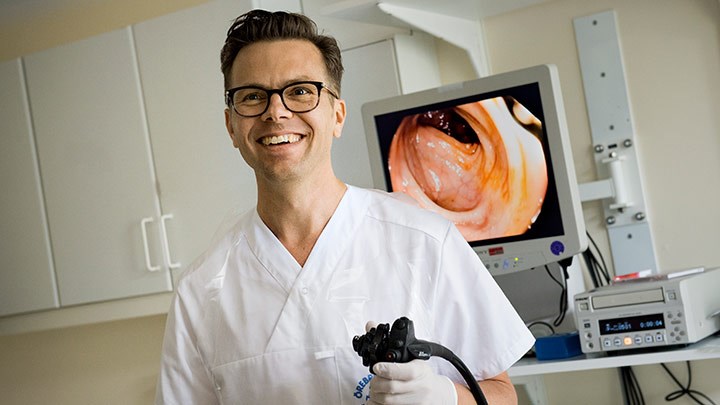Blood test could cut diagnosis time for youth with IBD

A simple blood test shows whether stomach problems in children and teenagers are likely to be inflammatory bowel disease, as shown in the study results published in the highly-ranked journal Nature Communications.
“The blood test can complement today’s more unpleasant methods and significantly shorten the time to a correct diagnosis,” says Jonas Halfvarson, professor of gastroenterology at Örebro University, who led the research.
Tuulia Hyötyläinen and Samira Salihovic are other Örebro researchers who contributed to the study now published in Nature Communications. Tuulia Hyötyläinen, professor of chemistry, specialises in metabolomics, which, among other things, identifies biomarkers for diseases. Samira Salihovic is an assistant professor of chemistry and researches metabolomics.
Lipids are a group of biological molecules that include fats. They play essential roles in the body and cells as energy storage and signalling molecules.
A lipidomic signature of pediatric IBD in Nature Communications
Researchers examined children and teenagers referred to the Academic Children’s Hospital in Uppsala and suspected of having inflammatory bowel disease (IBD). Measurement of blood lipids led to the identification of specific lipids linked to IBD. These results were then confirmed in two other groups of young people with suspected IBD, in Norway and the UK.
“What’s unique about our study is that we’ve identified two specific lipids that indicate IBD, and we can measure these concentrations in the blood. This can make it possible for healthcare to develop the method further and, in the future, use it in practice,” says Jonas Halfvarson.
Next step clinical testing
The aim is to apply for funding for the next step in developing a practical toolkit and proceed to clinical testing.
“We started from the patient perspective, moved on to research and healthcare – and we’re now on our way back to the patient,” states Jonas Halfvarson.
The prevalence of inflammatory bowel diseases, such as Crohn’s disease and ulcerative colitis, among children and young people up to the age of 18 has increased – and continues to increase. In Sweden, it is estimated that around 100,000 people live with some form of IBD.
Often takes time
“Making a correct diagnosis often takes time – for several reasons. One is that the symptoms are often very nonspecific and can come from many diseases in the stomach and intestines. Stool-based tests are quite good, but the problem here is that many young people find it repulsive,” says Jonas Halfvarson.
This unpleasantness means that some young people hesitate to undergo the test. A comprehensive examination of the intestine or colonoscopy is required upon suspected IBD.
“Many patients are reluctant to undergo a colonoscopy. Add to that lengthy queues and long waiting times. The lack of resources makes it even more important to select those who really need the examination to avoid unnecessary procedures,” says Jonas Halfvarson.
There are good reasons to find a simpler test – such as a blood test – to detect IBD.
Text: Maria Elisson
Photo: Kicki Nilsson, ICON
Translation: Jerry Gray
